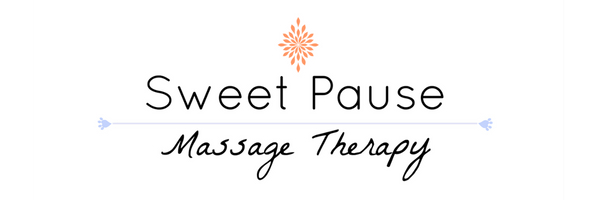A common misnomer regarding deep tissue (DT) massage therapy is that it is supposed to hurt in order to be productive. This cannot be further from the truth. I can say this coming from personal experiences as a receiver of DT massage and also as a professional massage therapist. I have learned DT techniques and implement them throughout each of my sessions with ALL of my clients, even the ones who say they don’t like a lot of “pressure”. DT techniques do not need to involve undue or “stressful” pressure or pain in order to “get the knots out”. Let me explain, first by explaining what deep tissue even means in the first place because perhaps this is where the duality and confusion originates.
Muscles have many layers of tissue, while also there are sometimes multiple muscles stacked on top of one another in our bodies. For example our backs have many layers of muscle upon muscle; there are the muscles that attach each vertebrae and muscles that run along both sides of the spine and there are more superficial muscles like trapezius. In order to get deep into muscle tissue, past the superficial muscles and into deeper layers, a skilled massage therapist must first know how to warm up all of the muscle tissue and surrounding connective tissue known as fascia. This involves what is known as Swedish technique, employing effleurage and petrissage strokes. Effleurage quite literally means “moving fluids” using circulatory methods, hence actually warming the tissue. And petrissage means “kneading”, “lifting” and “wringing” and when done correctly these techniques should NEVER hurt the client. If it does, there could be an injury or bruising and the therapist should check in with the client to ensure their comfort. Once enough effleurage and petrissage has warmed up the tissue, then a therapist can begin using sharper and more specific tools, such as elbows, forearms, fingertips and thumbs (then a combination of Swedish and DT work can be done throughout the duration of the session). Fingertips and thumbs should never be pointy or jabbing, but used with intention, fluidity and purpose. What I mean by this is that the therapist needs to think about what tool will work for a particular muscle and how other tools may not be appropriate for another part of a muscle and/or other muscles in the body. Furthermore, just because one tool works for one body does not mean that the next body will be as receptive. Massage therapists must adapt throughout even one session alone, different tools and techniques must be consistently implemented throughout, and they must continuously meet the client where they are THAT day as techniques used in previous sessions may not be appropriate for that particular session. We humans change daily, hourly, and sometimes by the minute! Clients bring a whole different set of issues to the table (yes, pun!) each time they come to me and it is my duty to adapt to them and check in on what they might need more of or differently that day than last time.
For me when I receive massage, I tend to like and need a lot of pressure with sharper tools on my upper back and shoulders, as well as neck. However when it comes to my limbs, “my appendicular skeleton”, I am quite tender in some areas, like biceps and triceps in my arms and my IT bands and quadriceps of both my legs. Where I am tender is where I know I need a lot of warming up, where I think there isn’t as much circulation as the axial musculoskeletal structures like head and neck and trunk of vertebrae. My appendicular skeleton needs more slow and steady hands with broader tools, like an open palm. Open palms with focused deep pressure moving up my IT band is just as productive as using a sharp elbow. And focused thumb work using circular strokes (as well as kneading, soft-fist figure-eights, lifting, friction, vibration) while covering various acupressure points is very productive and also feels wonderful. Simple and strong petrissage strokes can loosen muscle adhesions more productively and still feel better than pointy and sharp tools that cause me to wince in pain. I’ve received (and give) massage where the therapist does a mixture of all of these therapeutic and productive techniques while also has me inhale and exhale with his long strokes. This is an amazing technique that gets me (and my clients ) focused on my breath--meditative and zen--as well as really helps to loosen the muscle tissue and joints in a slow and purposeful manner. This is my type of massage and I think should be the go-to when envisioning DT, as opposed to “getting beat up” as I’ve heard folks say, and as I've experienced. Some clients request getting “beat up”, as they have said, because they are used to that being the DT massage experience. I say OKAY, understanding what they mean, but then I show how DT massage can be productive, loosening and relaxing while also not hurt. So far my feedback from folks has been exactly as described “wow, you do DT without it hurting and it feels so relaxing AND productive!”
Check out my Instagram page @sweetpause
